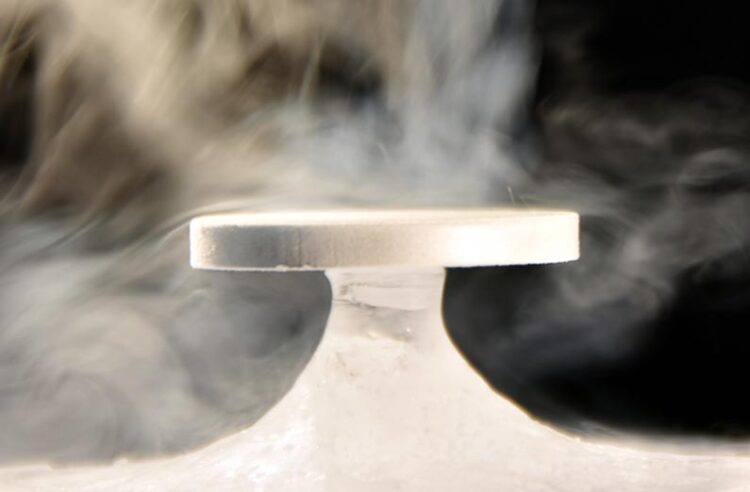Zen stones naturally placed atop pedestals of ice

A laboratory reproduction of the Zen stone phenomenon in a lyophilizer.
© Nicolas Taberlet / Nicolas Plihon
… a phenomenon finally understood.
Like a work of art enshrined in a museum, some stones end up on a pedestal of ice in nature, with no human intervention. This “Zen stone” phenomenon, named after the stacked stones in Japanese gardens, appears on the surface of frozen lakes, Lake Baikal (Russia) in particular.
These structures result from the phenomenon of sublimation, which causes a body, in this case ice, to change from solid to gaseous form without the intermediary form of a liquid. This was recently demonstrated by researchers from the CNRS and l’Université Claude Bernard Lyon 1,1 who reproduced the phenomenon in the laboratory.
They showed that the shade created by the stone hinders the solar irradiance that sublimates the ice, thereby sculpting the pedestal. This research has helped bring to light and understand a rare phenomenon of sublimation within a natural context on Earth. It was published in the journal PNAS during the week of 27 September 2021.
A video of the phenomenon reproduced in the laboratory is also available.
Note
1 – The researchers are part of the Laboratoire de physique (CNRS/ENS de Lyon).
Journal: Proceedings of the National Academy of Sciences
DOI: https://www.pnas.org/cgi/doi/10.1073/pnas.2109107118
Article Title: Sublimation-driven morphogenesis of Zen stones on ice surfaces
All latest news from the category: Physics and Astronomy
This area deals with the fundamental laws and building blocks of nature and how they interact, the properties and the behavior of matter, and research into space and time and their structures.
innovations-report provides in-depth reports and articles on subjects such as astrophysics, laser technologies, nuclear, quantum, particle and solid-state physics, nanotechnologies, planetary research and findings (Mars, Venus) and developments related to the Hubble Telescope.
Newest articles

Properties of new materials for microchips
… can now be measured well. Reseachers of Delft University of Technology demonstrated measuring performance properties of ultrathin silicon membranes. Making ever smaller and more powerful chips requires new ultrathin…

Floating solar’s potential
… to support sustainable development by addressing climate, water, and energy goals holistically. A new study published this week in Nature Energy raises the potential for floating solar photovoltaics (FPV)…

Skyrmions move at record speeds
… a step towards the computing of the future. An international research team led by scientists from the CNRS1 has discovered that the magnetic nanobubbles2 known as skyrmions can be…





















